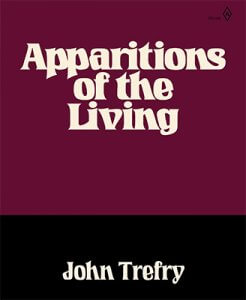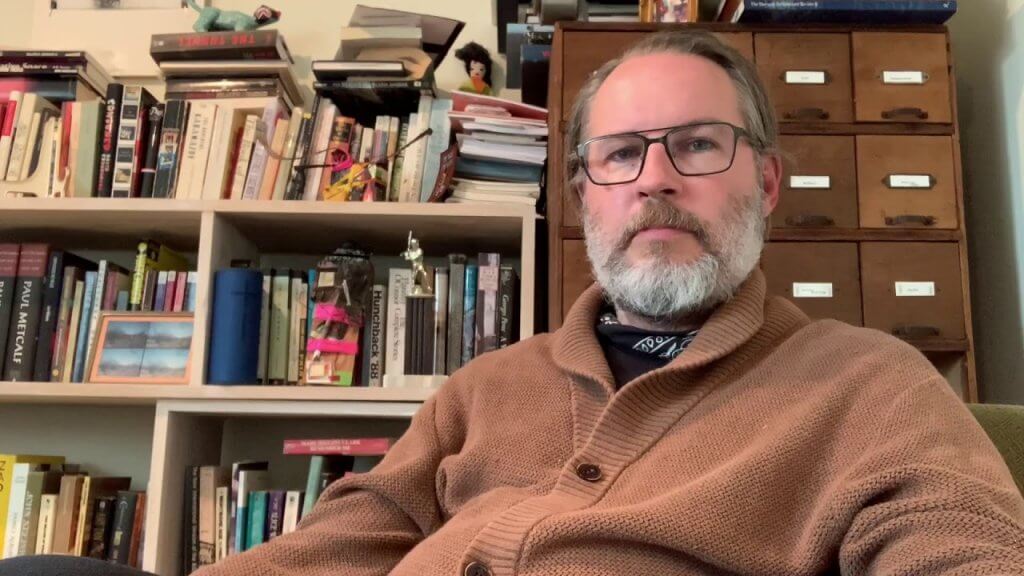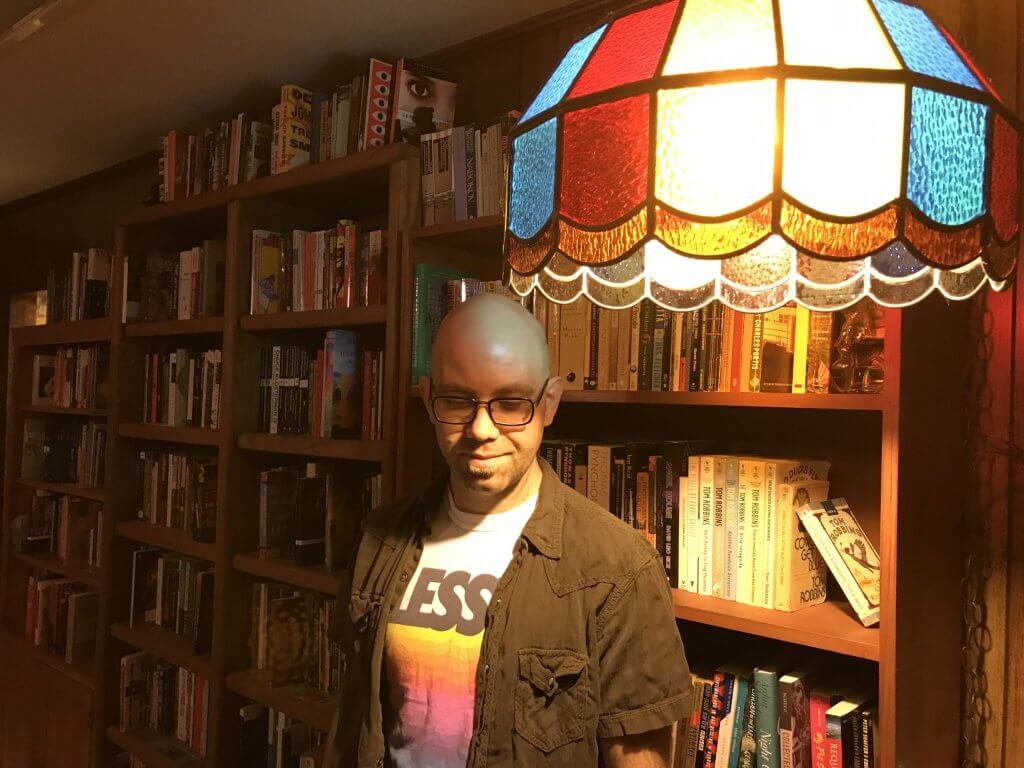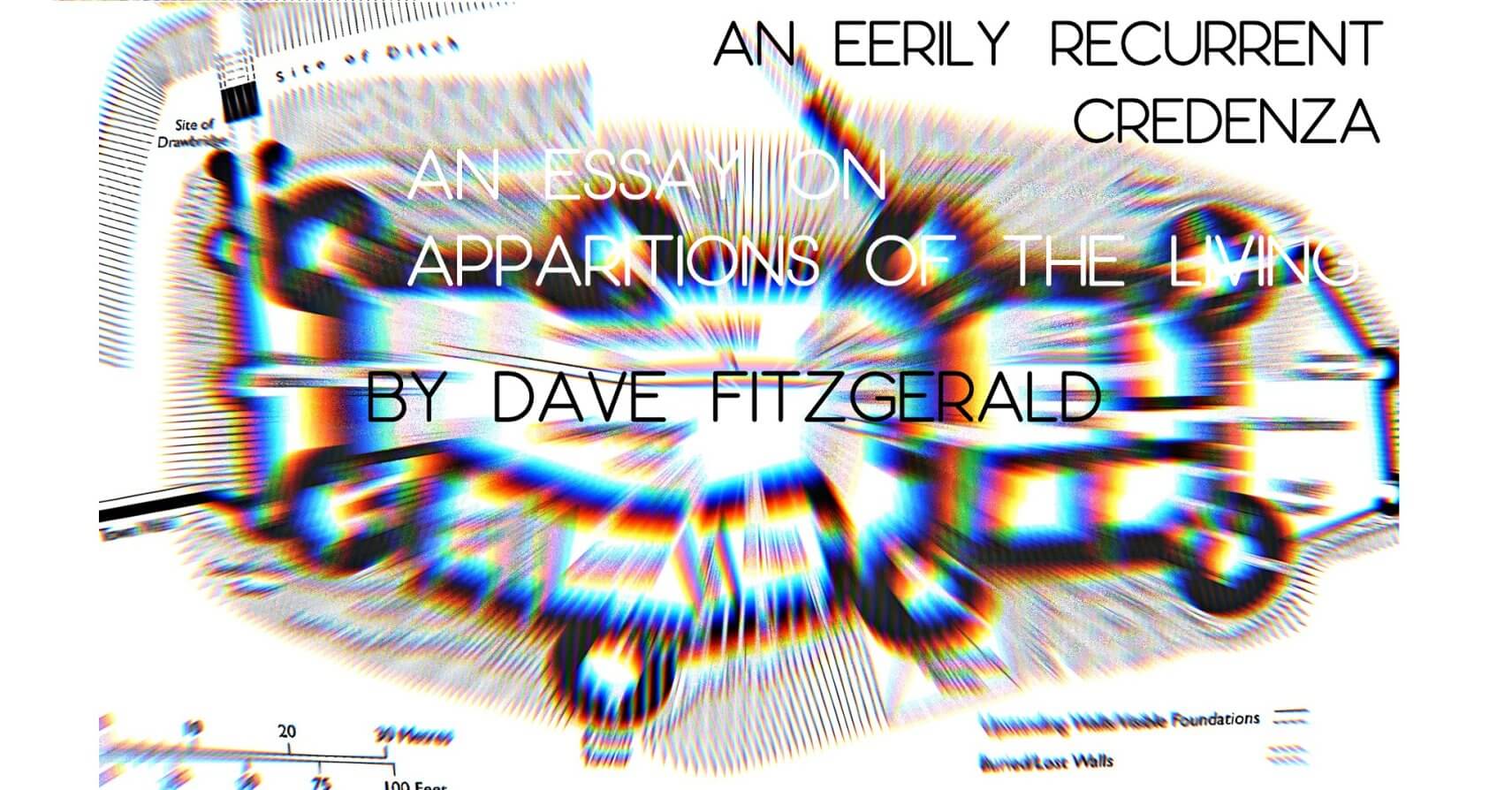When people ask me about my job, I tend to deflect. “It’s incredibly boring,” I’ll say. “Trust me. You don’t want to hear about it.” That’s not humility, either. I work in a warehouse that stores decades’ worth of paper records for a large state university, stored in uniform boxes on 3 floors of blue metal shelves – 12 boxes to a shelf, 4 shelves to a column, 28 columns to a row, 12 rows to a floor – and organized via an esoteric numbering system that, at this moment, my boss and I are the only two people on Earth who understand. (This is called job security.) She keeps everything mapped out and updated in the computer system, and I do the physical labor, regularly pulling and palletizing boxes to be shipped out for destruction, based on various state-mandated retention schedules, thus making room for new boxes to be received and stored. I also retrieve individual records upon request, as needed.
Bored yet?
We are, in essence, the institution’s memory. Not its emotional memory – you’ll still need a yearbook and some cheap booze for that – but if it physically or statistically happened here, be it an acceptance or a graduation, a hiring or a firing, a crime or an arrest, an A or an F – we have a record of it. The job is repetitive and isolating, finite in its physical dimensions and essentially infinite in its catalogic aspirations (at least until we all let go of paper for good). And because of this, it lends itself extremely well to both navel-gazing, and occasional, incidental annihilation of the self, sometimes in the same day. Am I at the nexus of all existence? Am I outside of it? Am I a projection, endlessly reshuffling the cabinets of my own consciousness? A semi-self-aware looping avatar of some larger, more corporeal being? Am I in Purgatory? Am I in Hell? Am I a Q*bert? These are the kinds of questions that arise as I tread up and down these near-identical tunnels of metal and cardboard every day, not because I’m unhappy – it’s actually the best job I’ve ever had, by a wide margin – but because it affords me the time and creative energy to consider them, and to read colossal books like  John Trefry’s Apparitions of the Living, and to write essays about them like this.
John Trefry’s Apparitions of the Living, and to write essays about them like this.
For those who may not know, Trefry is the founder and, as far as I know, lone operator of Inside the Castle, a small press based in Lawrence, Kansas specializing in experimental literature. Thanks to his eyeball-rupturing design layouts, and his willingness to publish pretty much anything that excites his personal interest, no matter how wildly unmarketable it might be, nor how complicated to execute (Google screenshots of Mike Corrao’s Smut-Maker if you’d like a particularly vivid example), he has amassed a catalogue of titles under his freak-fonted banner unlike any other in indie lit today. And while it’s not quite accurate to say that he’s cultivated an air of mystery around himself and his Castle – I don’t get the sense that Trefry cares enough about what anyone else thinks to “cultivate” much of anything – that air most definitely exists (I like to think of it as an enchanted mist rising up off of the moat). He’s doing things, both through his publishing and his own writing, that virtually no one else is doing, and if there’s a guiding principle behind what he chooses to champion, it’s encapsulated in something he told me about himself: “I don’t like to do the same thing twice.”
If that seems like a lot of setup, it’s only because Trefry’s sophomore novel, Apparitions of the Living, feels, in a way, strangely anathema to that masthead statement – and strangely attuned to what I’ve said about myself. This is a book that swims in repetition. A book about melting into the narrow psychic hallways of doing the same thing not just twice, but hundreds of thousands of times. Day after day. Week after week. Year after year.
The plot is thick, but cryptic. In the beginning, a man shuttles a kidnapped boy across the desert, moving from one cheaply indistinguishable motel room to the next, tension building between their disparate perspectives as the boy is deprived of all spatial and temporal signifiers. In the middle, they arrive at a conference – the Roundtable of Urban Topology – being held in a much larger hotel where the boy’s mother works as a maid. Her pinhole-focused terror at his absence is her only guiding thought as she cleans and resets a thousand samely furnished rooms a thousand times, while a thousand people come and go around her every day. All talking alike, all dressed alike, they scurry betwixt her muscle memories like timelapsed background extras, aggregating and dispersing in tidal waves of predictable transit, and from there to thousands upon thousands of other such rooms and conferences around the globe. For a brief time, the man sets out to displace another as the conference’s keynote speaker, and deposits the boy in a room. The mother’s daily routine suddenly becomes a race against time to find the right room among hundreds. Toward the end, there is revealed a death, (or perhaps several), and a denouement: back to the wilderness.
That’s my best guess anyway.
I could tell you the characters’ names, sure. And try harder to explain what I think happens between them. Absolutely. But none of that would mean much once you started reading, because the characters are not the main characters in Apparitions of the Living. In fact, Trefry goes to incredible lengths to never reveal a single thought or emotion any of them might be having, eschewing all omniscient narration and interior monologue in favor of only delineating the tangibly concrete. As such, the real main characters in Apparitions of the Living become perceivable phenomena: sand, and grout, and air conditioner hum; carpet nap, and oilcloth, and an eerily recurrent credenza. Phrases will bubble to the surface until they reach a tempest – a swirling Charybdis of shoeboots and doorlatches and ambulatories – only to recede back into the cauldron of Trefry’s limitless facility, allowing others to emerge and start the churn anew. I’m mixing my metaphors here, but the book’s layout accordions between double-spaced, half-italicized squares and more densely packed, rectangular towers of relentlessly poetic language – far more concerned with patterns and textures than answers or truths – as though Trefry (an architect by day) didn’t write it so much as build it. Each word a brick, each unnumbered page a looming edifice, challenging us to find a lone door or window inside.

(Here seems like as good a place as any to mention that, in addition to his writing and publishing work, Trefry also makes harsh electronic noise music under the name Topeka Flesh, and that I soundtracked my reading of Apparitions of the Living with his chronological 8-album discography. I cannot recommend this highly enough. The claustrophobic, suffocating nature of this music feels tailor-made for this purpose – the way it sounds like it’s always collapsing, always exploding – like a recording of a napalm blast stretched on a rack and palpated with railway spikes, or twenty cathode-ray TVs all tuned to slightly different channels of static – only vivifies Trefry’s immersive, ensorcelling prose.)1(Brown Blood, The Great Pyramid of Topeka, and this year’s Ennui Beast were my favorites. Use headphones. Big ones.)
Trefry’s dedication to describing literally everything but his characters’ states of mind – the terrain and buildings that surround them, the functions and sensations of their physical bodies, the sounds those bodies make and hear – works to carve them out in exquisite silhouette, while leaving our imaginations to color in the details of whomever we might see. By the time I reached the line “All expressions are an inaccessible language. Fully visible in isolation, no interpretations, no sensations, no communication.”, it read something like a thesis statement. What matters here is not so much who these people are as what they are caught up in – the cycles in which they are trapped, the all-consumingness of the man’s determination, the boy’s disorientation, the mother’s desperation. “Ritual abuse” is a term that recurs throughout the book, which also feels like it’s grappling with the concept of inherited trauma – envisioning them as the conjoined yin and yang of human history, if not all human relations. Its characters act as mere totems for our most instinctive, least rational impulses – to cling to youth, to chase permanence, to evade death. In this way, as the title suggests, these wraithlike figures almost begin to feel like actual ghosts, trapped on the terrestrial plain, unable to comprehend anything but their repetitive tasks left forever undone.
If you’re wondering now, five hefty paragraphs later, why I wrote all that stuff about my job at the beginning, it was to illustrate this point. I know from repetition. The warehouse I described above is about 3 miles from my home. The garden trails where I run every day after work are less than a mile beyond that. The grocery store where I do the bulk of my shopping is less than 2 miles in the other direction. For days and even weeks at a time, my life can feel extraordinarily small. But when that small life opens up space for my own writing, no life I can imagine seems bigger. In reading Apparitions of the Living, I felt that perspective was perhaps the decoder ring. Zoom out far enough, and we’re all extraordinarily small – shuffling antlike from place to place, building to building, task to task, conference to conference – waking, dressing, talking – cleaning, resetting, sleeping – living, moving, dying – there are patterns to all of it, if you’re willing to hold it at a far enough remove; take your feelings out of the equation. Zoom in far enough, and you might glimpse majesty in the blurred minutia – the eternally shifting signs in the sand, the ephemeral wonders in the carpet nap, the impossible music beneath the incessant noise. Either way, get outside your own middle distance, and the whole world is just variations on a theme. Adventure, and meaning, are where you find them.
One particular morning, I arrived at work and a coworker immediately warned me to watch my step. She directed my attention to the office’s ratty low-pile carpet. At first glance, I saw nothing amiss, but she insisted. “Look closer.” Only then, as I peered into the ancient, midnight-blue tread – tread I’d been walking across for years and never looked at twice – that I saw it was moving. It was all moving. Rippling in place like a living Magic Eye. Aswarm with termites. I won’t lie, I jumped back about three feet and probably yelped a little. Once I saw it, I couldn’t unsee it. No matter how hard we try to keep straight our facts, or hide our emotions; to disappear into routine, or force our way out of it; no matter how much paper we push around in this life, or the next, or inside the crumbling filing systems of our own minds, the termites are coming for us all.

For me, that yelping moment is what Apparitions of the Living is about. The banal, seemingly infinite loops of daily life, measured against the shocks that last a heartbeat, but somehow come to define us all the more for their brutal instantaneity. The violence that begets the ritual that begets the violence… “People are clocks ticking, dry grass in wind, dull patterns, piles of clutter, wood construction creaking,” Trefry writes, “choosing between two types of hubris, that you matter or that you can declare nothing matters. […] Every human act is a disruption of equal weight.” These are the phrases that bubbled to the surface for me – the doors and windows I found into this monolithic work and the mysterious mind behind it.
I’m sorry if this review has felt overly obtuse, but to try to unpack Apparitions of the Living like a regular book would be to do it, and you, a disservice. This is writing expressly intended for neurochemical interaction. It will disorient you, and recalibrate you, and force your brain to work differently. I can’t tell you what it will be about for you. But maybe it’s best, rather than towering structures to be scaled and infiltrated, to think of Trefry’s textblocks as vast recesses, reaching down, beckoning us to dive in and paddle around – wave pools of eternal crest and ebb. Maybe it’s both. You have to swim the moat, after all, to get inside the castle.

